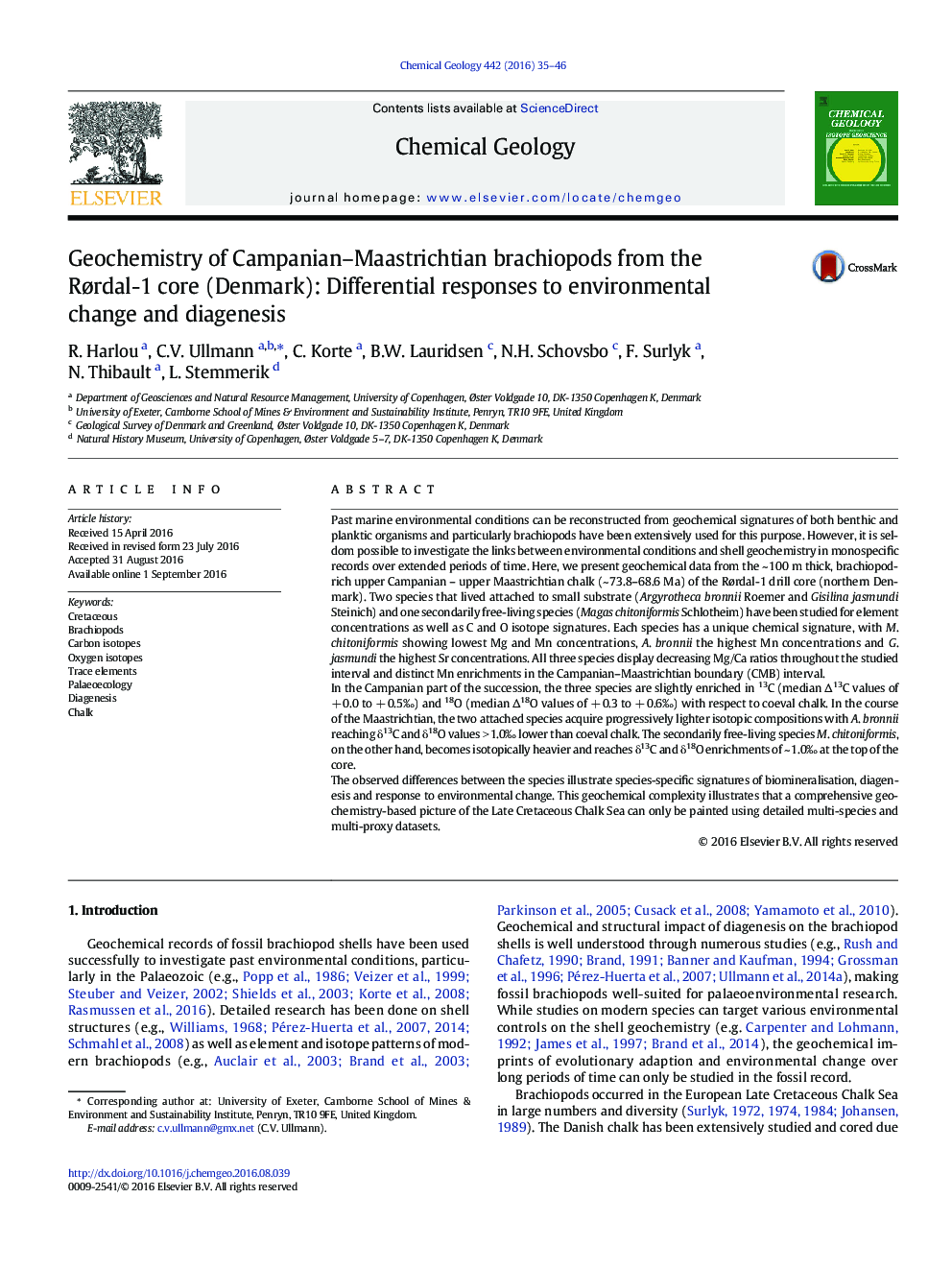| Article ID | Journal | Published Year | Pages | File Type |
|---|---|---|---|---|
| 4698185 | Chemical Geology | 2016 | 12 Pages |
•5 Ma long geochemical records for three brachiopod species•Diagenetic trends for element/Ca ratios are species- and time-specific.•Brachiopod signals agree in the Campanian and diverge in the Maastrichtian.•Ecological stress is related to offsets in geochemical signatures.
Past marine environmental conditions can be reconstructed from geochemical signatures of both benthic and planktic organisms and particularly brachiopods have been extensively used for this purpose. However, it is seldom possible to investigate the links between environmental conditions and shell geochemistry in monospecific records over extended periods of time. Here, we present geochemical data from the ~ 100 m thick, brachiopod-rich upper Campanian – upper Maastrichtian chalk (~ 73.8–68.6 Ma) of the Rørdal-1 drill core (northern Denmark). Two species that lived attached to small substrate (Argyrotheca bronnii Roemer and Gisilina jasmundi Steinich) and one secondarily free-living species (Magas chitoniformis Schlotheim) have been studied for element concentrations as well as C and O isotope signatures. Each species has a unique chemical signature, with M. chitoniformis showing lowest Mg and Mn concentrations, A. bronnii the highest Mn concentrations and G. jasmundi the highest Sr concentrations. All three species display decreasing Mg/Ca ratios throughout the studied interval and distinct Mn enrichments in the Campanian–Maastrichtian boundary (CMB) interval.In the Campanian part of the succession, the three species are slightly enriched in 13C (median Δ13C values of + 0.0 to + 0.5‰) and 18O (median Δ18O values of + 0.3 to + 0.6‰) with respect to coeval chalk. In the course of the Maastrichtian, the two attached species acquire progressively lighter isotopic compositions with A. bronnii reaching δ13C and δ18O values > 1.0‰ lower than coeval chalk. The secondarily free-living species M. chitoniformis, on the other hand, becomes isotopically heavier and reaches δ13C and δ18O enrichments of ~ 1.0‰ at the top of the core.The observed differences between the species illustrate species-specific signatures of biomineralisation, diagenesis and response to environmental change. This geochemical complexity illustrates that a comprehensive geochemistry-based picture of the Late Cretaceous Chalk Sea can only be painted using detailed multi-species and multi-proxy datasets.
